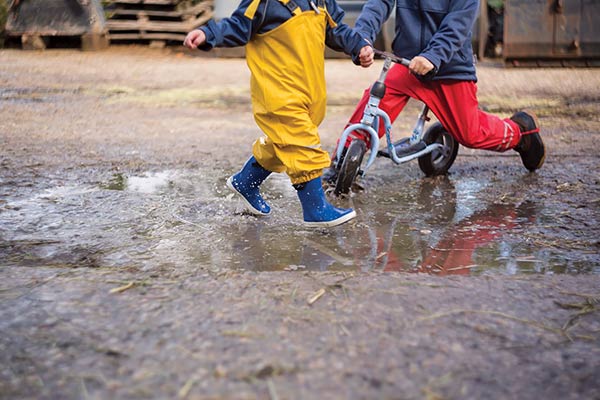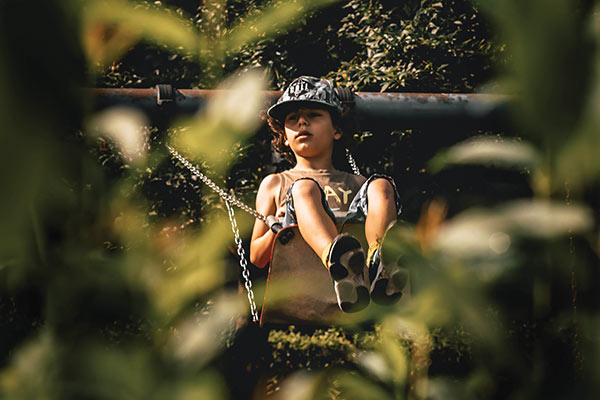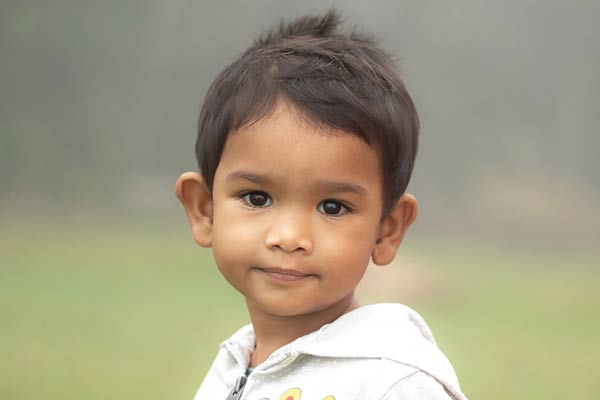Subtotal: $
Checkout-

The Woman Who Carried Me
-

Samuel Ruiz García
-

Christian Nonviolence and Church History
-

American Muslims: Race, Faith, and Political Allegiance
-

Ministers and Magistrates
-

Pick the Right Politics
-

Editor’s Postscript: Notes from the Lockdown
-

Readers Respond: Issue 24
-

Family and Friends: Issue 24
-

What Goes Up
-

The Politics of the Gospel
-

What Are Prophets For
-

Bishop Ambrose
-

The Anabaptist Vision of Politics
-

Jakob Hutter
-

The Bruderhof and the State
-

Saint Patrick
-

Reading Romans 13 Under Fascism
-

Holding Our Own
-

Living with Strangers
-

Tolstoy’s Case Against Humane War
-

Edna St. Vincent Millay’s “Conscientious Objector”
-

Oscar Romero
-

The Martyr in Street Clothes
-

Editors’ Picks Issue 24
-

Van Gogh Comics

Boys Aren’t the Problem
A review of Francis Wardle’s Oh Boy! Strategies for Teaching Boys in Early Childhood
By Sally Thomas
March 25, 2020
The year my older son was three-turning-four, he attended an English nursery school that was – and I hardly exaggerate – a little boy’s heaven, a heaven of things to see and try and do. Indoors and out the school offered, in the words of the Victorian educator Charlotte Mason, a “wide and varied feast” of engaging experiences, which became evident literally as you walked through the door. When I first came to visit the school, the spring before our son began as a pupil, a flock of baby chicks, recently hatched from an incubator and now peeping and scratching in a box outside the head teacher’s office, made me pause on the threshold and think, “This looks like a good place.”
It was a good place, though the things that made it good were simple. Indoors it consisted of two large rooms, a “noisy room” and a “quiet room.” The noisy room had an art table with paints and modeling clay, and another table dedicated to “model-making,” with donated cereal and shoeboxes, paper towel and toilet paper rolls, and lots of tape. In a corner, children could experiment with musical instruments of the rhythm and general-loudness sort: rattles, maracas, clappers, xylophones, drums, bells. A lofted structure like an indoor treehouse served variously, with changes of costume and props, as a kitchen, a rabbit hutch, a mechanic’s shop, a fire station, and a spaceship. A ball pit was the locus of noisy activity. Meanwhile, in the quiet room – about which I don’t remember hearing much, now that I think of it – children could page through picture books or play simple educational computer games.

Photograph courtesy of Markus Spiske
Outdoors, the school had a covered paved area, where even on the rainiest days children could ride tricycles, scooters, and pedal cars, or push and pull each other in wagons. In the schoolyard stood an elaborate climbing frame and slide. There was a large sandpit where, a teacher told me one day, my son occupied himself happily in digging for a Roman city. Daily the children spent at least an hour outside. In the last twenty minutes of the day, they went indoors to gather in small groups for stories and songs. Otherwise, indoors or out, they were free to roam from activity to activity as their interest led them.
Teachers were there to mix paint colors, to find the end of the roll of tape, or to buckle on a firefighter’s hat.
In this school, the teacher’s role was far less oriented toward instruction than toward support and observation of the children in their pursuits. Teachers were there to mix paint colors, to find the end of the roll of tape, or to buckle on a firefighter’s hat. They were also there to observe the children as they played, and to chat casually but purposefully with parents when we arrived at the end of the day. It was in informal conversations with his teachers that I discovered many things about my son. I learned, for example, that like many little boys he was a kinetic learner, who formed and communicated his thoughts about, say, interplanetary travel while hopping on one foot. Or that he was generous: once he’d spent his entire outdoor time pulling a wheelchair-using classmate around the covered pavement in a wagon. Or that he was imaginative and perhaps unusually historically literate for a three-year-old; the dig for the Roman city had clearly bemused the teacher who beheld its progress. At any rate, daily I came away with an illuminated view of my child as a person who was thoughtful, interesting, imaginative, kindhearted, able, and good. Inevitably, it seems to me now, he came away from nursery school with a similar impression of himself. In hindsight I can see that this early vision of himself shaped and empowered him, as a student and a human being, in lasting ways.
Recently I have encountered a term that encapsulates everything I treasure in my memory of that nursery-school experience. In Oh Boy! Strategies for Teaching Boys in Early Childhood, educator Francis Wardle invokes the phrase goodness-of-fit to describe, as he puts it, “a match between a child’s unique behaviors, characteristics, and dispositions, and the social and physical environment in which the child develops and learns.” Goodness-of-fit, in other words, suggests an educational experience that acknowledges both the fullness of the child’s personhood and the fact of his developmental stage. In this paradigm, his education is oriented toward the reality that he is a person, here and now, with particular abilities and needs, not an eventual product inching toward completion down an assembly line. Goodness-of-fit, for young children, recognizes and validates the ways this age group learns and knows: hands-on, experiential, concrete, social, physical. A pedagogy based on goodness-of-fit presumes that when a child is allowed to learn and know in these ways, he will naturally prepare himself, in intellectual, emotional, physical, and social ways, for the challenges of his education’s next phase.

Photograph courtesy of Paul Voie
Written for educators, but accessible to and useful for parents, Oh Boy! describes in detail what goodness-of-fit looks like, and what makes it good. Though the book’s focus is little boys, the principles and solutions it proposes point to good early learning experiences for all children. As Wardle notes, preschool-aged children learn best through largely self-directed avenues of play and exploration, engaging both mind and body. The child’s intellect, still apprehending the concrete world, is developing toward abstract reasoning, but hasn’t reached it yet. The child’s emotions, like his body full of impulsive energy, are developing toward self-regulation, but haven’t reached it yet, either. The most successful educational models will work with, not against, these realities.
Oh Boy! describes how an early childhood learning environment can embody goodness-of-fit in all its elements. Funnily enough, this ideal environment strongly resembles my son’s English nursery school. Indoors, it includes spaces for imaginative play and drama, scientific exploration, art, and hands-on “making” activities. Outdoors, it provides spaces for climbing, running, jumping, exploration, and nature study. Wardle devotes some energy to the importance of grass in a child’s physical environment, as well as to good playground design. Wardle observes that most contemporary playgrounds are both “artificial” – plastic, rendered in garish colors – and boring. “Almost all of the equipment on these playgrounds is only for functional play,” i.e., closed-ended pursuits like swinging, sliding, or riding on wheeled toys, which provide only “the simplest, most basic form of play.” Though I would argue in favor of swinging, for example, as a contemplative activity in which a dreamy child might engage for a long time without being bored, and although I have seen children play imaginative games like pirate ship on what I would have thought were stultifyingly babyish sets of playground equipment, the typical American playground does manifestly underestimate children’s capacity for both self-preservation and self-directed play. A good playground, says Wardle, provides equipment that may figure into a variety of play scenarios: a generic structure with a ladder, for example, could be a castle, treehouse, ship, or fortress, depending on the game. Like the best toys, the best outdoor areas don’t tell children how to play. You don’t have to give a child a boat to make him think of one.
Goodness-of-fit involves a certain amount of calculated freedom from direct adult supervision and instruction.
But a learning environment isn’t purely physical. Its cognitive and interactive elements matter as much as, if not more than, its physical spaces, in terms of how it supports or thwarts a child’s development. Goodness-of-fit involves a certain amount of calculated freedom from direct adult supervision and instruction. It grants the child leeway to make mistakes, and to interact socially with other children without constant oversight, intervention, and micromanagement. Offering varied opportunities for learning – multisensory, hands-on, “whole-child” learning – an environment exhibiting goodness-of-fit is one in which any child can find a way to succeed at something, and thus to view himself as a successful person, someone who can learn and be interested in many things, who likes the people around him and expects to be liked, who trusts himself to be competent and good because the adults around him trust him to be competent and good.
All of this seems so obvious that you might wonder: Why are we even talking about it? And why are we talking particularly about boys? We’re talking about it, Wardle says, because badness-of-fit not only exists (he calls it “poor goodness-of-fit”), but has become the norm of praxis in many American preschool programs. Its hallmarks – a lot of teacher-directed instruction, a lot of sitting still, systems of competition, reward, and punishment – signal a rollback of the work done by twentieth-century developmental psychologists like Erik Erikson and Jean Piaget. Their theories concerning maturational stages identified early childhood as a period of intense growth, intellectual and social as well as physical, validating the personhood of the young child in much the same way that advances in embryology have underscored the complex humanity of the child in the womb.
Instead, the current early childhood situation, as Wardle sketches it, is that of a system driven by a pervasive one-size-fits-all academic anxiety, the fruit of government initiatives like No Child Left Behind. Anxiety about academic skill sets and standardized assessment has meant that an educational trajectory whose endpoint is college entrance has worked its way steadily down, from first grade into kindergarten, from kindergarten into preschool. Anxiety about high-school graduation rates and college preparation now burdens education for three-, four-, and five-year-olds: “89 percent of kindergarten standards focus on literacy and other cognitive skills, 7 percent on social development, and 1 percent on physical and motor activities.” Validation of early childhood as a rich and unique learning stage has given way, in many preschool programs, to a blanket imperative that all children should be at least beginning to read, write, and calculate. The culture of early-childhood education has become a culture of potentialized crisis: if a child can’t read in kindergarten, how will he ever go to college? The imposition of “outcome-based standards” and “the downward extension of the K–12 curricular content into the early childhood ages” has resulted, Wardle says, in the proliferation of “teacher-directed instructional approaches that do not match up with the developmental needs of many young children.”
In many ways, the issues raised in Oh Boy! apply to all children, not just boys. It’s problematic for any child to be asked to do things the brain and body aren’t ready to do. A child whose powers of analytic reasoning haven’t yet begun to develop will struggle to understand numbers, or to connect spoken sounds with printed letters. A child consumed with a physical drive to move and explore will struggle with sitting still. That someone thinks a child should be able to do these things doesn’t mean that all children, or even most children, can do them. To expect otherwise is to set children up to fail. I’m reminded here of my second son, who at three was expelled from, of all things, a church nursery, because he refused to sit at the table and color quietly with everyone else. In the nursery workers’ view, the problem wasn’t their expectation that a three-year-old boy should sit nicely and color a coloring page. Instead, he was the problem. As Wardle says, “When a child struggles, we automatically see the child as deficient rather than questioning the standards.… It is always the child that must be fixed.”
Statistically speaking, the child who most needs to be fixed is also most likely to be a boy. Boys, says Wardle, while comprising 54 percent of the US preschool population, “represented 79 percent of the children suspended once, and 82 percent of children suspended multiple times.” Furthermore, across racial and ethnic groups, boys constitute the majority of children held back in kindergarten, the majority of children referred for special-education services, the majority of children “reported simply to struggle in programs.”

Photograph courtesy of M. M. Rahman Akash
It doesn’t take much imagination to envision what, given that kind of start, a child’s lifelong relationship with school and learning is likely to be. An early preoccupation with academics seems potentially defeating for many, if not most, children. It seems, on the other hand, strategically designed to torpedo boys, whose “developmentally appropriate behavior … is commonly misidentified as a disability.” These trends may at least partly explain, over the longer term, why on university campuses women outnumber men, despite being outnumbered by them in the general young-adult population. If you couldn’t succeed in preschool, why on earth would you consider going to college? In short, what is bad for any little child is likely to be worse for a little boy. And what is bad for a little boy will likely continue to be bad news, at least educationally, for the young man he will become.
But Oh Boy! is not, by and large, a bad-news book. Its main purpose is not to diagnose why boys are failing, as a spate of books in recent years has done, nor to ask why, despite mounting evidence of a crisis, policymakers have done so little to help them. Instead, its message for educators and parents is a positive and practical one: Change expectations, not children. Expectations are malleable. They are disposable. They can all too often be misguided. What Francis Wardle proposes in Oh Boy! is a paradigm shift away from the problematizing of early childhood, and especially of little boys, back toward an education that recognizes the richness and goodness of their intrinsic modes of learning.
The little boy who couldn’t stop moving was happy, and alive, and wondering, with the kind of wonder that leads to knowing.
The good news, too, is that this kind of education is possible. I have seen it happen, and I have seen a child to whom it happened grow up. It has been almost twenty years since my older son attended that English nursery school, where he played and watched eggs hatch into chicks, dug for a Roman city, and pulled his classmate around in a wagon. At this writing, as it happens, he is pursuing a postgraduate degree in neuroscience. Even now, looking back, I’m still struck by the richness of his early experience, the value of being understood, at three and four, as a person of intellect and interest on his own developmental terms. The little boy who couldn’t stop moving was thinking. He was doing, demonstrating his imaginative capacity and his engagement with the people and things around him. He was happy, and alive, and wondering, with the kind of wonder that, as Gregory of Nyssa says, leads to knowing. Importantly, this was how he learned to see himself, and it was an empowering vision. It is this vision of the self that can and should be the great and lasting gift of good early education. The results – college, career, achievement – are not the point. The child is not a product. His childhood is not a train platform, from which he needs to be pushed as quickly as possible onto the Great Knowledge Railroad. His childhood itself – that time of play and discovery and wonder – is the path that will lead him to knowing.
Already a subscriber? Sign in
Try 3 months of unlimited access. Start your FREE TRIAL today. Cancel anytime.



































